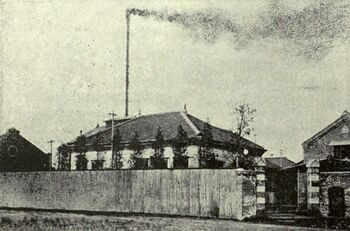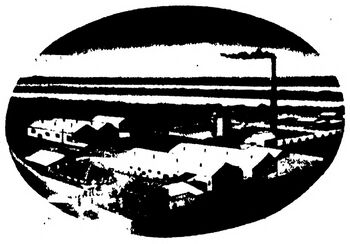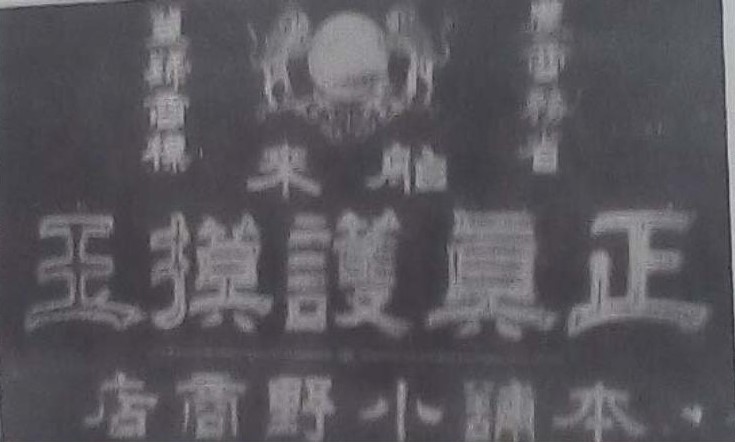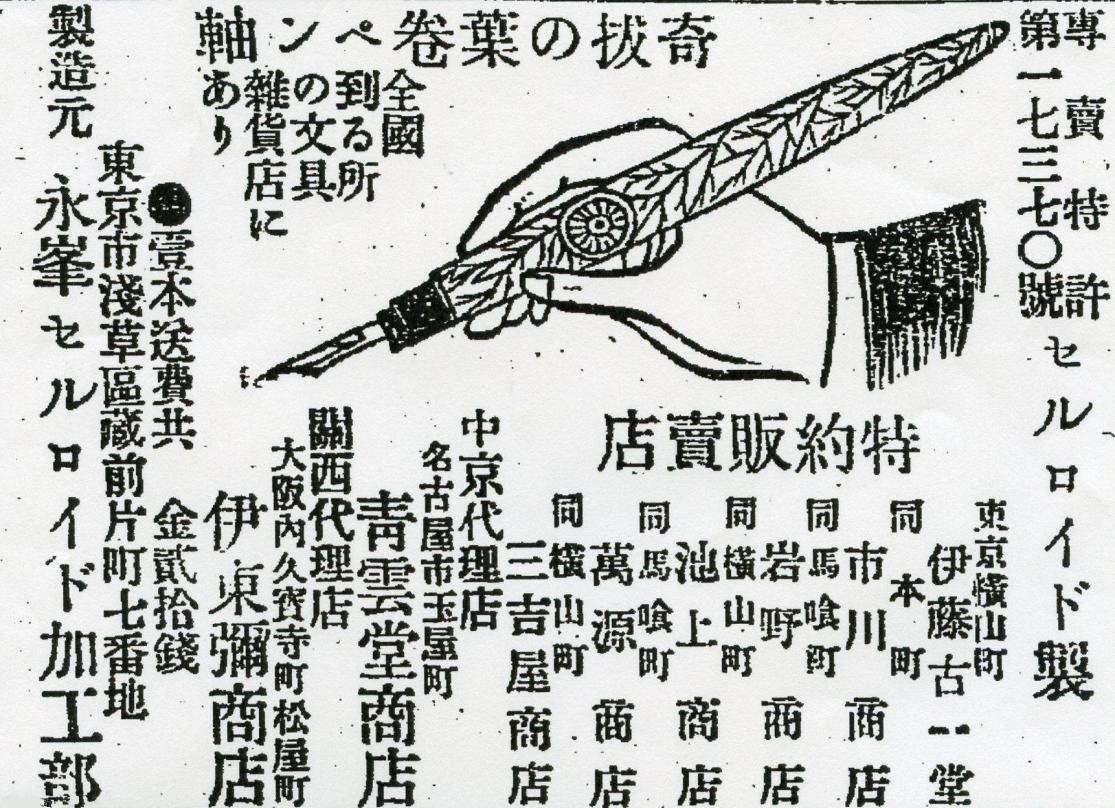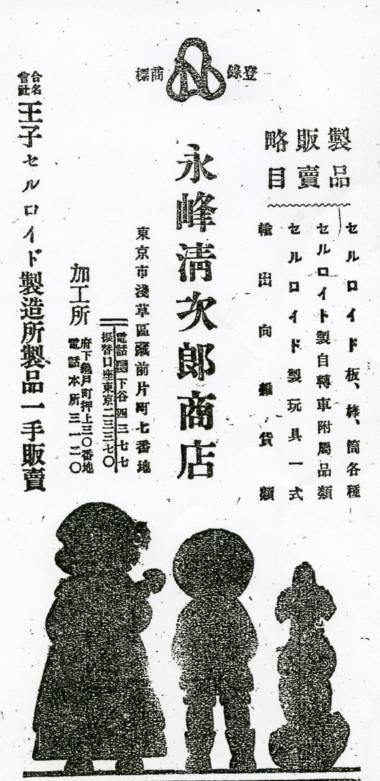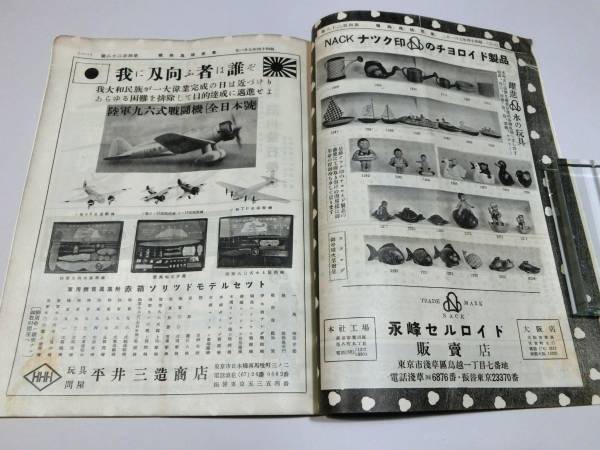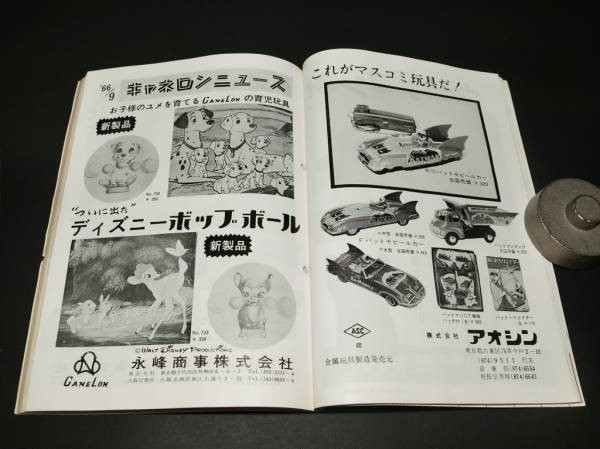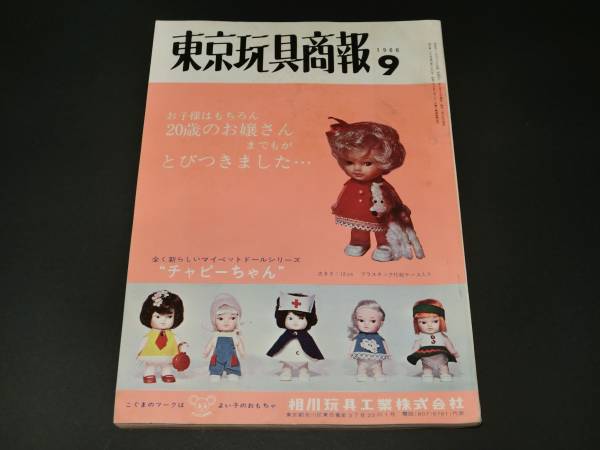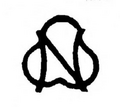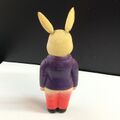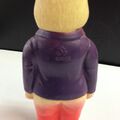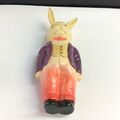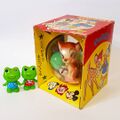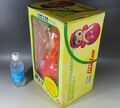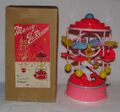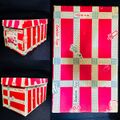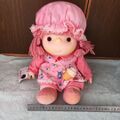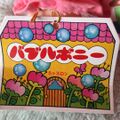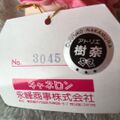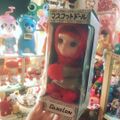Difference between revisions of "Canelon Toys"
From Sega Retro
m (→External links) |
m (Me and my "fu**ed up" English...) |
||
| Line 16: | Line 16: | ||
[[File:NagamineSeijiroShoten Headquarters (1917).jpg|thumb|350px|right|Nagamine Seijiro Shoten (永峰清次郎商店) headquarters in [[wikipedia:Asakusa|Asakusa]], Tokyo, as seen in 1917{{fileref|Japan in the Taisho Era Book JP 1917 (by Nishizawa, Iwata).pdf|page=725}}{{fileref|Japan in the Taisho Era Book JP 1917 (by Nishizawa, Iwata).pdf|page=726}}]] | [[File:NagamineSeijiroShoten Headquarters (1917).jpg|thumb|350px|right|Nagamine Seijiro Shoten (永峰清次郎商店) headquarters in [[wikipedia:Asakusa|Asakusa]], Tokyo, as seen in 1917{{fileref|Japan in the Taisho Era Book JP 1917 (by Nishizawa, Iwata).pdf|page=725}}{{fileref|Japan in the Taisho Era Book JP 1917 (by Nishizawa, Iwata).pdf|page=726}}]] | ||
[[File:NagamineCelluloidIndustryCoLtd Headquarters (1938).jpg|thumb|350px|right|Nagamine Celluloid Industry Co. Ltd (株式会社永峰化成工業) headquarters in [[wikipedia:Asakusa|Asakusa]], Tokyo, as seen in 1938{{fileref|The Indo-Japanese Business Directory 1938-1939 Book JP (by Nakaya Misuma Company Limited).pdf|page=211}}{{fileref|The Indo-Japanese Business Directory 1938-1939 Book JP (by Nakaya Misuma Company Limited).pdf|page=244}}]] | [[File:NagamineCelluloidIndustryCoLtd Headquarters (1938).jpg|thumb|350px|right|Nagamine Celluloid Industry Co. Ltd (株式会社永峰化成工業) headquarters in [[wikipedia:Asakusa|Asakusa]], Tokyo, as seen in 1938{{fileref|The Indo-Japanese Business Directory 1938-1939 Book JP (by Nakaya Misuma Company Limited).pdf|page=211}}{{fileref|The Indo-Japanese Business Directory 1938-1939 Book JP (by Nakaya Misuma Company Limited).pdf|page=244}}]] | ||
| − | The history of the company can be traced back to 1894{{fileref|History of Japanese Celluloid Industry JP Part 2.pdf|page=9}}, when Japanese | + | The history of the company can be traced back to 1894{{fileref|History of Japanese Celluloid Industry JP Part 2.pdf|page=9}}, when Japanese entrepreneur and pioneer of the Japanese celluloid industry{{fileref|TheChemistandDruggist UK 1920-06-26.pdf|page=204}} Seijiro Nagamine{{fileref|Japan and Her Exhibits at the Panama-Pacific International Exhibition Book JP 1915 (by Hakurankwai Kyokwai, Tokyo).pdf|page=282}}{{fileref|Japan and Her Exhibits at the Panama-Pacific International Exhibition Book JP 1915 (by Hakurankwai Kyokwai, Tokyo).pdf|page=466}} (永峰清次郎) who had just started production of celluloid combs, manufactured{{fileref|Yokohama Port and Celluloid Toys JP Research Report (by Kazuhiko Matsuo).pdf|page=6}}{{fileref|Yokohama Port and Celluloid Toys JP Research Report (by Kazuhiko Matsuo).pdf|page=7}} celluloid [https://archive.fo/DJhhu/04d1560852b50640184ab85be9f5e2cd1c259a7b.jpg blow ball pipes] known as ''"Fukigami balls"'' (吹上玉, Fukigami Tama), the first celluloid toys in the history of Japan, produced in his workshop called Nagamine Seijiro Shoten (永峰清次郎商店, '''lit.''' Seijiro Nagamine Store). |
Three years later in 1897{{fileref|History of Japanese Celluloid Industry JP Part 2.pdf|page=9}}, [https://ja.wikipedia.org/wiki/%E5%9D%AA%E4%BA%95%E7%8E%84%E9%81%93 Gendō Tsuboi] (坪井玄道) introduced in Japan the first table tennis ball and in the next year in 1898{{fileref|History of Japanese Celluloid Industry JP Part 2.pdf|page=9}} production of table tennis balls begins at Seijiro Nagamine's workshop which had just began exporting celluloid blow ball pipes in that year, shipping fifty dozens{{fileref|Yokohama Port and Celluloid Toys JP Research Report (by Kazuhiko Matsuo).pdf|page=7}} to [[wikipedia:Chongqing|Chongqing]] in China. | Three years later in 1897{{fileref|History of Japanese Celluloid Industry JP Part 2.pdf|page=9}}, [https://ja.wikipedia.org/wiki/%E5%9D%AA%E4%BA%95%E7%8E%84%E9%81%93 Gendō Tsuboi] (坪井玄道) introduced in Japan the first table tennis ball and in the next year in 1898{{fileref|History of Japanese Celluloid Industry JP Part 2.pdf|page=9}} production of table tennis balls begins at Seijiro Nagamine's workshop which had just began exporting celluloid blow ball pipes in that year, shipping fifty dozens{{fileref|Yokohama Port and Celluloid Toys JP Research Report (by Kazuhiko Matsuo).pdf|page=7}} to [[wikipedia:Chongqing|Chongqing]] in China. | ||
| Line 131: | Line 131: | ||
*[https://en.wikipedia.org/wiki/Masanosuke_Watanabe Revolutionary worker Masanosuke Watanabe (渡辺 政之輔), former laborer of Nagamine Celluloid Co. Ltd at www.wikipedia.org]{{ref|http://archive.vn/JgeA3}}{{ref|http://archive.vn/2Ez6a}}{{ref|http://archive.vn/2Ez6a/1f5f64052719ea4c82adac6af804c61fdffc6275.jpg}} | *[https://en.wikipedia.org/wiki/Masanosuke_Watanabe Revolutionary worker Masanosuke Watanabe (渡辺 政之輔), former laborer of Nagamine Celluloid Co. Ltd at www.wikipedia.org]{{ref|http://archive.vn/JgeA3}}{{ref|http://archive.vn/2Ez6a}}{{ref|http://archive.vn/2Ez6a/1f5f64052719ea4c82adac6af804c61fdffc6275.jpg}} | ||
*[https://en.wikipedia.org/wiki/Tanno_Setsu Japanese feminist and labor activist Tanno Setsu (丹野セツ), wife of Masanosuke Watanabe (渡辺 政之輔) at www.wikipedia.org]{{ref|http://archive.vn/JgeA3}}{{ref|http://archive.vn/2Ez6a}}{{ref|http://archive.vn/2Ez6a/1f5f64052719ea4c82adac6af804c61fdffc6275.jpg}} | *[https://en.wikipedia.org/wiki/Tanno_Setsu Japanese feminist and labor activist Tanno Setsu (丹野セツ), wife of Masanosuke Watanabe (渡辺 政之輔) at www.wikipedia.org]{{ref|http://archive.vn/JgeA3}}{{ref|http://archive.vn/2Ez6a}}{{ref|http://archive.vn/2Ez6a/1f5f64052719ea4c82adac6af804c61fdffc6275.jpg}} | ||
| − | *[http://archive.vn/HK10B Japanese | + | *[http://archive.vn/HK10B Japanese entrepreneur Keiji Iwakami (岩上敬二), founder of Iwakami Industry Co. Ltd. (岩上工業株式会社, Iwakami Kogyo Kabushiki Gaisha) and former employee of Nagamine Celluloid Co. Ltd. at iwakamikogyo.wixsite.com (archived)] |
*[https://ja.wikipedia.org/wiki/%E6%A1%82%E7%AB%9C%E4%B9%9F Legendary Japanese radio presenter and Seijiro Nagamine's (永峰清次郎) grandson, Yasuo Nagamine (永峰康雄), best known by his stage name Tatsuya Katsura (桂竜也) at ja.wikipedia.org]{{ref|https://archive.ph/Sp5Yt/6e8bf2bd558c381d87ed92bc339e271780d468ed.jpg}}{{ref|https://archive.fo/Mxsif/e84bd00973aa2eabf84125f43dd57bea2000e042.jpg}} | *[https://ja.wikipedia.org/wiki/%E6%A1%82%E7%AB%9C%E4%B9%9F Legendary Japanese radio presenter and Seijiro Nagamine's (永峰清次郎) grandson, Yasuo Nagamine (永峰康雄), best known by his stage name Tatsuya Katsura (桂竜也) at ja.wikipedia.org]{{ref|https://archive.ph/Sp5Yt/6e8bf2bd558c381d87ed92bc339e271780d468ed.jpg}}{{ref|https://archive.fo/Mxsif/e84bd00973aa2eabf84125f43dd57bea2000e042.jpg}} | ||
*[https://archive.fo/XuVej Japanese freelance writer Eitaro Nagamine (永峰英太郎), Yasuo Nagamine's (永峰康雄) eldest son and Seijiro Nagamine's (永峰清次郎) great grandson at gentosha-go.com (archived)]{{ref|https://archive.fo/XuVej/b941a16502ab371f2f3d71ec32bb40b2f1d41a29.jpg}}{{ref|https://archive.ph/XLSPz}}{{ref|https://archive.fo/9Y7Dm}} | *[https://archive.fo/XuVej Japanese freelance writer Eitaro Nagamine (永峰英太郎), Yasuo Nagamine's (永峰康雄) eldest son and Seijiro Nagamine's (永峰清次郎) great grandson at gentosha-go.com (archived)]{{ref|https://archive.fo/XuVej/b941a16502ab371f2f3d71ec32bb40b2f1d41a29.jpg}}{{ref|https://archive.ph/XLSPz}}{{ref|https://archive.fo/9Y7Dm}} | ||
Revision as of 08:52, 16 March 2020

| ||
| Canelon Toys | ||
|---|---|---|
| Founded: 1894[1] | ||
| Merged with: Maruzen Co. Ltd (株式会社丸善) | ||
Headquarters:
|
This short article is in need of work. You can help Sega Retro by adding to it.
Canelon Toys (株式会社キャネロン, Kabushiki Gaisha Kyaneron), currently Canelon Chemicals Co. Ltd[2] (キャネロン化工株式会社, Kyaneron Kakō Kabushiki Gaisha), a division of Maruzen Co. Ltd[3] (株式会社丸善, Kabushiki Gaisha Maruzen), is a plastic products[4] manufacturing company (plastic containers, trays, packaging and growing systems for the horticultural and food industries) and former toy manufacturer[5][6][7][8] based in Honjō, Japan.
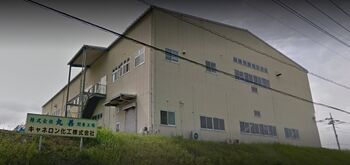
Contents
History
The history of the company can be traced back to 1894[1], when Japanese entrepreneur and pioneer of the Japanese celluloid industry[13] Seijiro Nagamine[14][15] (永峰清次郎) who had just started production of celluloid combs, manufactured[16][17] celluloid blow ball pipes known as "Fukigami balls" (吹上玉, Fukigami Tama), the first celluloid toys in the history of Japan, produced in his workshop called Nagamine Seijiro Shoten (永峰清次郎商店, lit. Seijiro Nagamine Store).
Three years later in 1897[1], Gendō Tsuboi (坪井玄道) introduced in Japan the first table tennis ball and in the next year in 1898[1] production of table tennis balls begins at Seijiro Nagamine's workshop which had just began exporting celluloid blow ball pipes in that year, shipping fifty dozens[17] to Chongqing in China.
In 1911[1] Seijiro Nagamine invented the blow molding method of manufacturing dolls, which he patented in 1913[18][19] and in 1915 Nagamine's celluloid dolls manufactured with this method were ehxibited[20][14][15] for the first time outside Japan at the Panama–Pacific International Exposition held in San Francisco.
The demand for Japanese toys increased due to the outbreak of World War I a year before in 1914[1] and in 1918, with three large manufacturing plants in Tokyo Metropolis, located in the special wards of Chiyoda, Kōtō and Arakawa, Seijiro Nagamine changed the name of the company to Nagamine Celluloid Co. Ltd.[21][22][23][24][25] (永峰セルロイド株式会社, Nagamine Seruroido[26][27][28][29][30] Kabushiki Gaisha) also known as Nagamine Chemical Industry Co., Ltd.[11][12] (株式会社永峰化成工業, Kabushiki Gaisha Nagamine Kasei Kogyo). Export value of celluloid toys exceeded 350 million yen in that year but after only two years in 1920[1], demand decreased substantially and orders plummeted to less than one quarter.
In 1924[1] economy recovered and both exports and domestic consumption increased and three years later in 1927 the production volume was the largest since the decline in demand four years before. This however caused a series of business difficulties with the major of them being a drop in prices.
The Japanese industry of celluloid enjoyed a decade of prosperity during the 1930s[31] with a record of billions in production and with an export value of 20 million yen in 1935[31], supplanted only by a 42 million yen export value in 1937[31].
However in 1940[31] after Europe banned imports of Japanese toys due to the outbreak of World War II, the company ceased operations until 1945[31], when despite the catastrophic impact, it managed[31] to resume production at the end of the war.
On July 18, 1949[32] Nagamine Celluloid Co. Ltd. (永峰セルロイド株式会社) amalgamated Tokyo-based trading company, Nagamine Shoji Co. Ltd[33] (永峰商事株式会社[34]), adopting the name of the amalgamated company, becoming famous in the 1960s and 1970s for its line of celluloid toys and dolls and mechanical tin toys (Roly Poly, Elephant Merry-Go-Round, etc) which were sold in Japan and abroad under the brand[35][36] name "Canelon".
Sometime after, the company changed its name to Canelon Co. Ltd. (named after its well known brand of toys), producing mostly toys for babies, including several from the Miffy series of toys for children, sold by Sega Toys in Japan, like the Busy Gym.
In 2002 the company was acquired by Maruzen Co. Ltd (株式会社丸善) which had been investing capital in the company since 1989, becoming Canelon Chemicals Co. Ltd. (キャネロン化工株式会社).
Promotional material
Print advertisements
Expression error: Unexpected < operator. File:The Indo-Japanese Business Directory 1938-1939 Book JP (by Nakaya Misuma Company Limited).pdf
Patents
Gallery
Nagamine's celluloid dolls, as seen in 1917[10] (Nagamine's logo in the background)
A pair of Sudare (window blinds) manufactured by the company
Old toys
External links
- Info about Maruzen Co, Ltd and its two subsidiary companies, E-Half Co, Ltd and Canelon Co, Ltd at www.foomajapan.jp
- www.maruzen.net/canelon/
- www.maruzen.net
- www.e-half.co.jp
- www.sekiguchi.co.jp
- www.monchhichi.co.jp
- Japanese stuffed toy line of dolls "Monchhichi" manufactured by Sekiguchi Co. Ltd. at www.wikipedia.org
- Revolutionary worker Masanosuke Watanabe (渡辺 政之輔), former laborer of Nagamine Celluloid Co. Ltd at www.wikipedia.org[40][41][42]
- Japanese feminist and labor activist Tanno Setsu (丹野セツ), wife of Masanosuke Watanabe (渡辺 政之輔) at www.wikipedia.org[40][41][42]
- Japanese entrepreneur Keiji Iwakami (岩上敬二), founder of Iwakami Industry Co. Ltd. (岩上工業株式会社, Iwakami Kogyo Kabushiki Gaisha) and former employee of Nagamine Celluloid Co. Ltd. at iwakamikogyo.wixsite.com (archived)
- Legendary Japanese radio presenter and Seijiro Nagamine's (永峰清次郎) grandson, Yasuo Nagamine (永峰康雄), best known by his stage name Tatsuya Katsura (桂竜也) at ja.wikipedia.org[43][44]
- Japanese freelance writer Eitaro Nagamine (永峰英太郎), Yasuo Nagamine's (永峰康雄) eldest son and Seijiro Nagamine's (永峰清次郎) great grandson at gentosha-go.com (archived)[45][46][47]
References
- ↑ 1.0 1.1 1.2 1.3 1.4 1.5 1.6 1.7 File:History of Japanese Celluloid Industry JP Part 2.pdf, page 9
- ↑ http://www.maruzen.net/canelon/index.html
- ↑ http://www.maruzen.net/index.html
- ↑ https://archive.fo/3PqVZ/da23d02a759ca3fc58eff4f28ce4c8f96b00fe61
- ↑ File:CanelonToys Box.jpg
- ↑ File:CanelonToys Doll.jpg
- ↑ File:CanelonToys Baby Toy.jpg
- ↑ File:CanelonToys Piano.jpg
- ↑ File:Japan in the Taisho Era Book JP 1917 (by Nishizawa, Iwata).pdf, page 725
- ↑ 10.0 10.1 File:Japan in the Taisho Era Book JP 1917 (by Nishizawa, Iwata).pdf, page 726
- ↑ 11.0 11.1 File:The Indo-Japanese Business Directory 1938-1939 Book JP (by Nakaya Misuma Company Limited).pdf, page 211
- ↑ 12.0 12.1 File:The Indo-Japanese Business Directory 1938-1939 Book JP (by Nakaya Misuma Company Limited).pdf, page 244
- ↑ File:TheChemistandDruggist UK 1920-06-26.pdf, page 204
- ↑ 14.0 14.1 File:Japan and Her Exhibits at the Panama-Pacific International Exhibition Book JP 1915 (by Hakurankwai Kyokwai, Tokyo).pdf, page 282
- ↑ 15.0 15.1 File:Japan and Her Exhibits at the Panama-Pacific International Exhibition Book JP 1915 (by Hakurankwai Kyokwai, Tokyo).pdf, page 466
- ↑ File:Yokohama Port and Celluloid Toys JP Research Report (by Kazuhiko Matsuo).pdf, page 6
- ↑ 17.0 17.1 17.2 File:Yokohama Port and Celluloid Toys JP Research Report (by Kazuhiko Matsuo).pdf, page 7
- ↑ 18.0 18.1 http://archive.ph/ZlFcb
- ↑ http://archive.fo/01xOG
- ↑ https://www.daicel.com/news/2017/20171130_109.html (Wayback Machine: 2020-02-15 15:00)
- ↑ File:Working Rules for Financial Statements and Pre-WW2 Financial Reporting of Japanese Industrial Firms 2008-03 (by Masayoshi Noguchi and Michiyasu Nakajima).pdf, page 10
- ↑ File:Working Rules for Financial Statements and Pre-WW2 Financial Reporting of Japanese Industrial Firms 2008-03 (by Masayoshi Noguchi and Michiyasu Nakajima).pdf, page 14
- ↑ File:Working Rules for Financial Statements and Pre-WW2 Financial Reporting of Japanese Industrial Firms 2008-03 (by Masayoshi Noguchi and Michiyasu Nakajima).pdf, page 25
- ↑ File:The Japan Year Book 1923 Book JP (by Yoshitaro Takenobu).pdf, page 656
- ↑ File:The Social Democratic Movement in Prewar Japan Book US 1966 (by George Oakley Totten).pdf, page 163
- ↑ File:Production Organizations in Japanese Economic Development Book JP 2007-01-18 (by Tetsuji Okazaki).pdf, page 190
- ↑ File:Production Organizations in Japanese Economic Development Book JP 2007-01-18 (by Tetsuji Okazaki).pdf, page 191
- ↑ File:Production Organizations in Japanese Economic Development Book JP 2007-01-18 (by Tetsuji Okazaki).pdf, page 208
- ↑ File:Production Organizations in Japanese Economic Development Book JP 2007-01-18 (by Tetsuji Okazaki).pdf, page 210
- ↑ File:List of Source Material for the Estimation of Inventory Investment (by Hermes-IR; Hitotsubashi University Repository).pdf, page 10
- ↑ 31.0 31.1 31.2 31.3 31.4 31.5 File:History of Japanese Celluloid Industry JP Part 2.pdf, page 10
- ↑ File:OfficialGazetteofJapan JP 1949-09-24 (English Edition; Government Printing Agency).pdf, page 25
- ↑ File:Commercial Import Detentions Report 1971-1972 (United States Department of Health, Education and Welfare; Food and Drug Administration).pdf, page 379
- ↑ File:Canelon JP PrintAdvert.jpg
- ↑ File:Agriculture Environmental and Consumer Protection for Fiscal Year 1972 (United States Senate; Committee on Appropriations).pdf, page 150
- ↑ File:ConsumerNews US Volumes 1-3 (United States Office of Consumer Affairs).pdf, page 67
- ↑ https://archive.fo/2Pnz2
- ↑ http://archive.fo/XDDOU
- ↑ http://archive.fo/zo1cc
- ↑ 40.0 40.1 http://archive.vn/JgeA3
- ↑ 41.0 41.1 http://archive.vn/2Ez6a
- ↑ 42.0 42.1 http://archive.vn/2Ez6a/1f5f64052719ea4c82adac6af804c61fdffc6275.jpg
- ↑ https://archive.ph/Sp5Yt/6e8bf2bd558c381d87ed92bc339e271780d468ed.jpg
- ↑ https://archive.fo/Mxsif/e84bd00973aa2eabf84125f43dd57bea2000e042.jpg
- ↑ https://archive.fo/XuVej/b941a16502ab371f2f3d71ec32bb40b2f1d41a29.jpg
- ↑ https://archive.ph/XLSPz
- ↑ https://archive.fo/9Y7Dm
